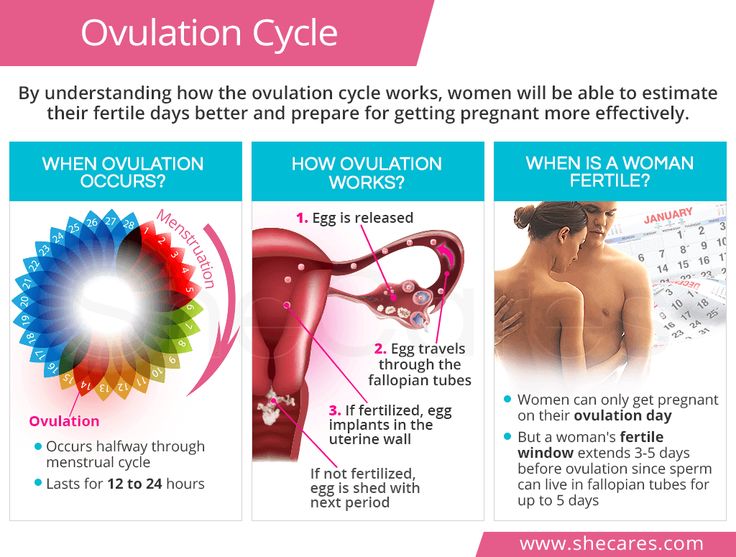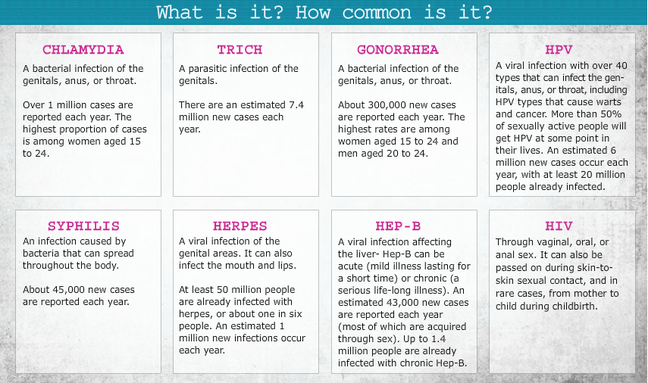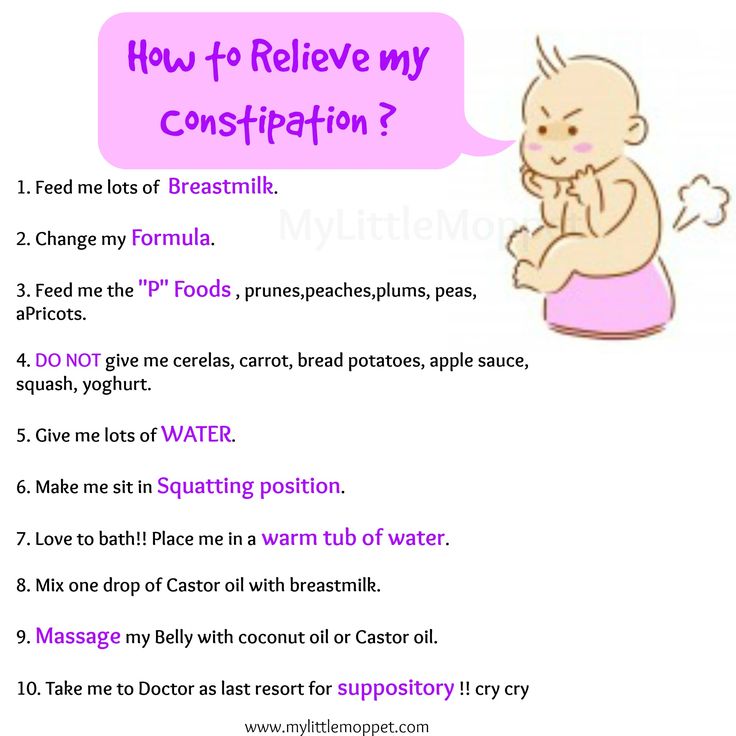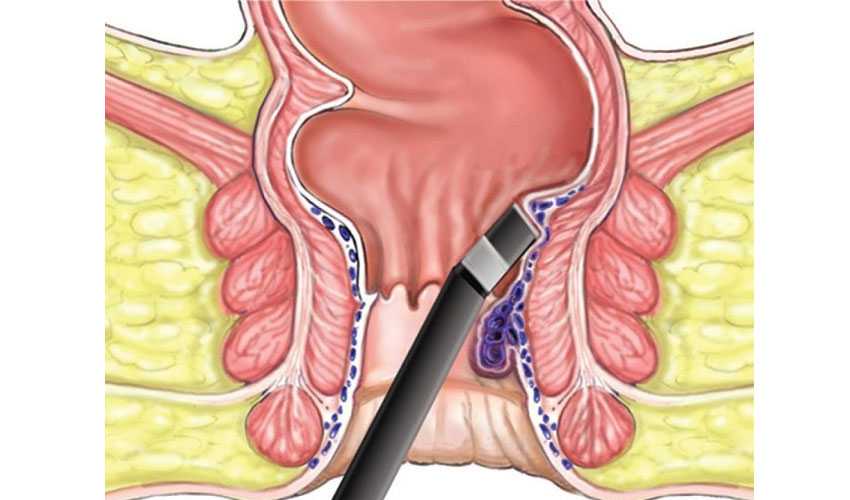What does a 10 week old fetus look like
10 Weeks Pregnant: Symptoms and Baby Development
10 Weeks Pregnant: Your Baby's Development
Your baby has come a long way in just a few short weeks! That little head is taking on a rounder, more human shape, and by now all the internal organs should be in place and starting to work together. Tiny tooth buds have begun to develop, too. Your baby’s fingers and toes are growing longer, and the webs that had been between each finger and toe are starting to disappear. At the moment, your baby’s eyes, eyelids, and ears are continuing to develop, but they’ve still got some growing to do before they’re fully formed. What’s in store for both you and your baby until you’re able to look your little one in the eyes for real? Find out by checking out our Pregnancy Guide; it contains tips and insights to help you get through the rest of the first trimester and beyond.
The Size of the Fetus at 10 Weeks Pregnant
Your little one is still growing very quickly! At 10 weeks, the average fetus is about the size of a strawberry, measuring approximately an inch from crown to rump.
Check out the illustration below for a look at how things are shaping up inside your belly as you head toward the end of the first trimester.
Mom's Body at 10 Weeks Pregnant
Your uterus is about the size of a large orange at this point, whereas before you became pregnant it was about the size of a small pear.
Around this time, you likely have had or will soon have a visit with your healthcare provider for a thorough examination. At this appointment, your provider may do an internal and external abdominal exam to determine the size and position of your baby, as well as take blood samples for a variety of other tests.
These blood tests may be used to determine if you have any infections, what your blood type and Rh factor are, and whether your own immunizations are up to date.
There’s a lot to do, but your provider will be able to walk you through the details and schedule future appointments and tests.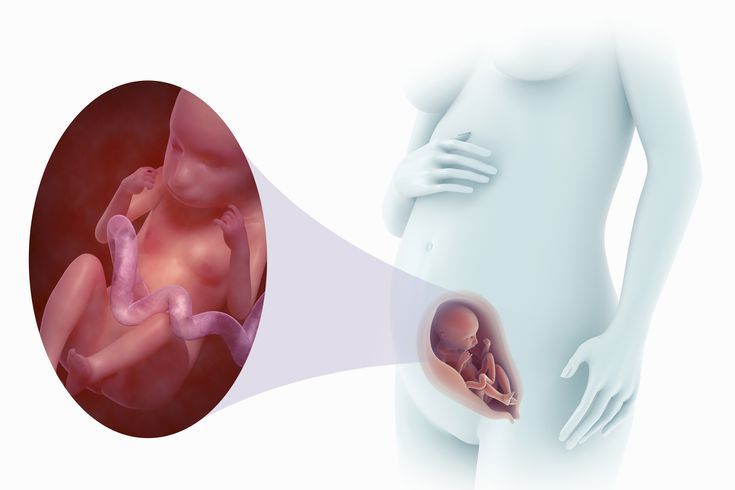
10 Weeks Pregnant: Your Symptoms
At 10 weeks pregnant, here are some of the symptoms you may be experiencing:
Morning sickness. You’re not alone if you’re 10 weeks pregnant and you're still suffering from morning sickness. The good news? You’re likely to start feeling better soon. Morning sickness often goes away after you enter the second trimester. Keep in mind, some moms-to-be experience a more severe form of morning sickness called hyperemesis gravidarum. If you suspect you may have this, speak to your healthcare provider.
Round ligament pain. Of all of the pregnancy symptoms you may be experiencing around this time, this one is among the most uncomfortable. Round ligaments are two of the ligaments in your pelvis that help support the uterus, and as your baby grows during pregnancy they stretch and soften. When these ligaments tighten, you may feel pain on one or both sides of your abdomen.
 Changing positions in bed or doing strenuous exercise may bring on this pain. Light stretching and gentle movements may help relieve the discomfort. If this symptom doesn’t go away on its own, or if you also have a fever, call your healthcare provider.
Changing positions in bed or doing strenuous exercise may bring on this pain. Light stretching and gentle movements may help relieve the discomfort. If this symptom doesn’t go away on its own, or if you also have a fever, call your healthcare provider.
Minimal weight gain. Even though your clothes may be fitting a bit tighter, you may not have gained much weight, and you may even have lost a little if you've been dealing with morning sickness. Read pregnancy weight gain facts and advice here and be sure to talk to your doctor if you’re concerned. You can also try using our Pregnancy Weight Gain Calculator tool for an estimate of healthy weight gain based on your pre-pregnancy weight.
Exhaustion. You might feel like napping at every opportunity. This could be thanks to the increased levels of the hormone progesterone in your body. You can find tips on how to get a good night’s sleep here. You really do need it!
Headaches.
 Some moms-to-be get the occasional headache during pregnancy. If you're experiencing this symptom, try to rest in a darkened room and apply an ice pack to your head or neck to help relieve the pain. Contact your healthcare provider if the headache persists or is severe.
Some moms-to-be get the occasional headache during pregnancy. If you're experiencing this symptom, try to rest in a darkened room and apply an ice pack to your head or neck to help relieve the pain. Contact your healthcare provider if the headache persists or is severe.
Mood swings. Hormonal changes may play a role in the highs and lows you feel when you’re about 10 weeks pregnant. You may find it helpful to distract yourself by chatting with friends, watching funny TV shows or movies, or treating yourself to a massage — just be sure to choose a trained masseuse who knows about safe massage techniques for pregnant women.
Vaginal discharge. You might be seeing more vaginal discharge than before, which is caused by your increased blood supply and higher hormone levels. This normal vaginal discharge is known as leukorrhea, and you can expect to see a clear to milky-colored, nearly odorless discharge that may appear slightly yellowish on your underwear.
 Contact your healthcare provider, though, if you notice a strong odor or color changes, or if you experience itching or bleeding around the vaginal area.
Contact your healthcare provider, though, if you notice a strong odor or color changes, or if you experience itching or bleeding around the vaginal area.
Acne. If you’re experiencing acne now and didn’t before you got pregnant, or if your acne is worse now than before, it may be one of your pregnancy symptoms. Read up on how you can combat some of those spots and blemishes in our article on pregnancy acne, and remember that it’s just one of those pesky pregnancy hormone-related symptoms that should clear soon after your baby is born.
10 Weeks Pregnant: Things to Consider
Reduce your caffeine intake, if you haven’t already done so. Many healthcare providers recommend reducing or eliminating caffeine from your diet so that you’re not having more than 200 mg per day (the equivalent of one 12-ounce cup of coffee). Cutting out caffeine can also help you sleep better.
As your pregnancy progresses, the weight of your growing uterus can hinder blood flow to the lower parts of your body.
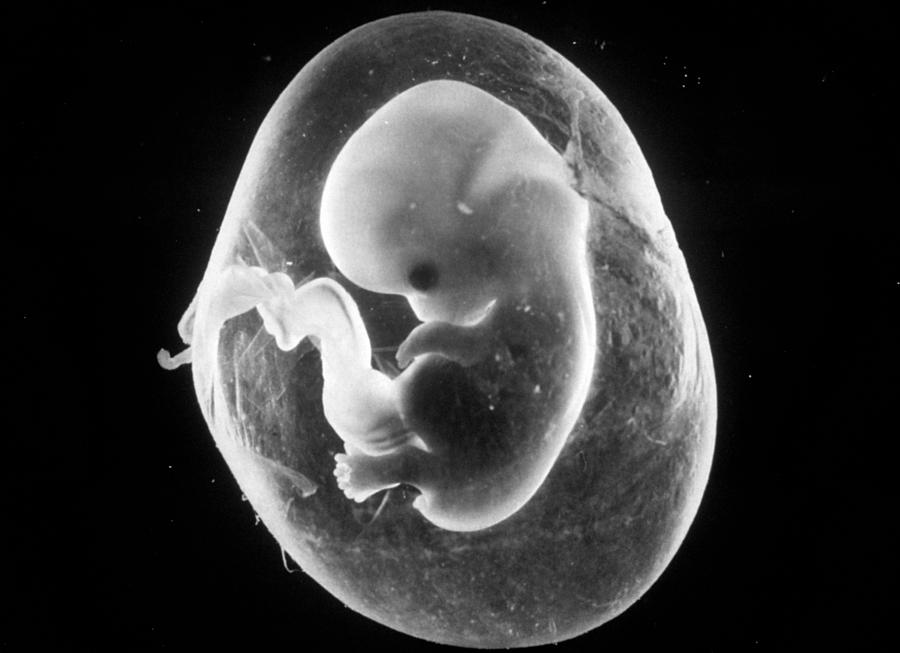 When this happens, the veins in your legs can become swollen, sore, and blue. Varicose veins are not preventable, but you can take steps to ease the discomfort and prevent them from becoming worse. Don’t sit with your legs crossed or stand or sit for long periods of time. Try wearing support hose and propping your legs up whenever you can to help improve blood flow. Also, stay active, move around, and add some safe pregnancy exercise to your daily routine if your healthcare provider approves.
When this happens, the veins in your legs can become swollen, sore, and blue. Varicose veins are not preventable, but you can take steps to ease the discomfort and prevent them from becoming worse. Don’t sit with your legs crossed or stand or sit for long periods of time. Try wearing support hose and propping your legs up whenever you can to help improve blood flow. Also, stay active, move around, and add some safe pregnancy exercise to your daily routine if your healthcare provider approves.
You may not be showing for a few weeks yet (although some moms-to-be start showing a little earlier than others), but you might like to think about starting a baby bump progression photo series – if this is something you might like to do. You could start as soon as you start showing, or even a little earlier. Pick a day of the week, where you’d like to stand and what to wear. Some wear a tight-fitting top, while others roll their singlet up to reveal their belly. Stand side-on and either take a selfie or have someone take a full-length photo of you.
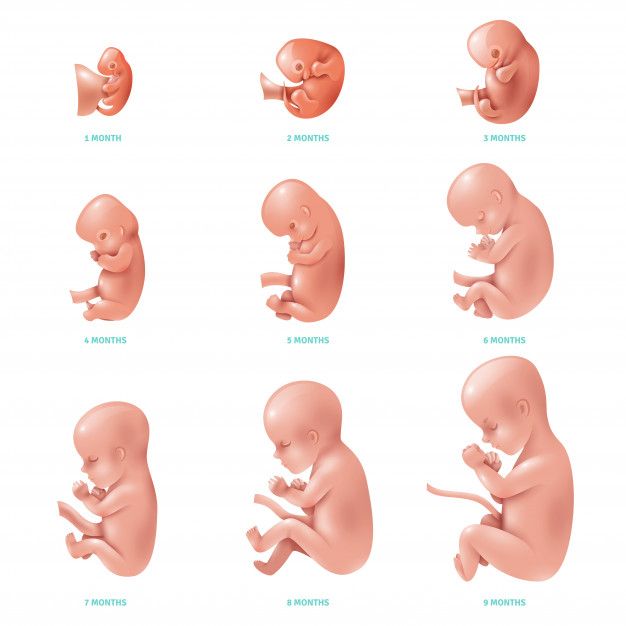 Once your baby is born you can even take a few postpartum shots with your baby in your arms. You’ll love being able to look back on how your belly grew as your pregnancy progressed.
Once your baby is born you can even take a few postpartum shots with your baby in your arms. You’ll love being able to look back on how your belly grew as your pregnancy progressed.
10 Weeks Pregnant: Ask Your Doctor
When can you hear your baby’s heartbeat?
When will you be able to know if you are pregnant with twins?
Are any genetic screening tests recommended? If so, when would these take place? Keep in mind: Genetic testing is completely optional. Talk to your doctor or consult a genetic counselor to decide whether these tests are right for you based on any risk factors, your family’s history, and any other considerations like your personal preferences.
What is chorionic villus sampling and is it recommended?
Is a nuchal translucency ultrasound recommended?
10 Weeks Pregnant: Your Checklist
Get a professional bra fitting and buy comfortable underwear and well-fitting bras if needed.

Start to plan a second trimester babymoon! You’re nearly in the trimester which is sometimes called the “honeymoon” period of pregnancy, when you may get your energy levels back, so this could be the right time to take a short break. Besides, after the second trimester, you may not have the chance to get away for a while, so this might be the perfect time to book a relaxing trip.
When you have a minute, read our article on pregnancy warning signs you should not ignore. You shouldn’t worry unduly, but it helps to be informed so you know what signs to look out for.
Sign up for even more pregnancy tips here:
Pregnancy at week 10 | Pregnancy Birth and Baby
Pregnancy at week 10 | Pregnancy Birth and Baby beginning of content4-minute read
Listen
Your baby
From 10 weeks, your baby is called a fetus. They are about 3.5cm long – around the size of a prune – and weight about 8g. The tadpole-like tail has disappeared.
They are about 3.5cm long – around the size of a prune – and weight about 8g. The tadpole-like tail has disappeared.
All of the organs have formed but they aren’t working yet. The ears are developing and the nostrils are in place above the upper lip. The jaw bones already include all the milk teeth.
The baby has internal sex organs, their ovaries or testicles, but the external sex organs still haven’t developed. The brain is active and has brain waves. The heart has 4 separate chambers and is beating at about 180 beats per minute, 3 times faster than an adult heart.
The arms and legs have grown longer, and the baby has tiny fingers and toes. Their ankles, wrists, knees and elbows are forming.
Your baby at 10 weeks
| Length: | 3.5cm |
| Weight: | 8g |
Your body
Your womb (uterus) is now about the size of an orange. You may find your clothes are tighter and your stomach may be sticking out, but this can be due to changes in your bowel rather than your pregnancy.
Many women feel vulnerable and emotional when they are pregnant. This is completely normal. You may also be more hungry than usual. Try not to fill yourself up with unhealthy food – choose nutritious snacks as part of a healthy diet while you’re pregnant.
Things to remember
You may have already had an ultrasound scan to confirm your due date, but a dating scan is normally done at around 10 weeks.
From 10 weeks you can start thinking about prenatal screening. One screening test you can have now is a non-invasive prenatal test, or NIPT, to screen for Down syndrome and certain other abnormalities in the baby. This is a simple, very accurate blood test, but it’s quite expensive and it’s not for everyone. Most women who want to screen for Down syndrome have combined first trimester screening a little later in the pregnancy.
You do not have to have screening. It depends on your age, history and unique circumstances. Talk to your doctor or genetic counsellor about the best screening tests for you.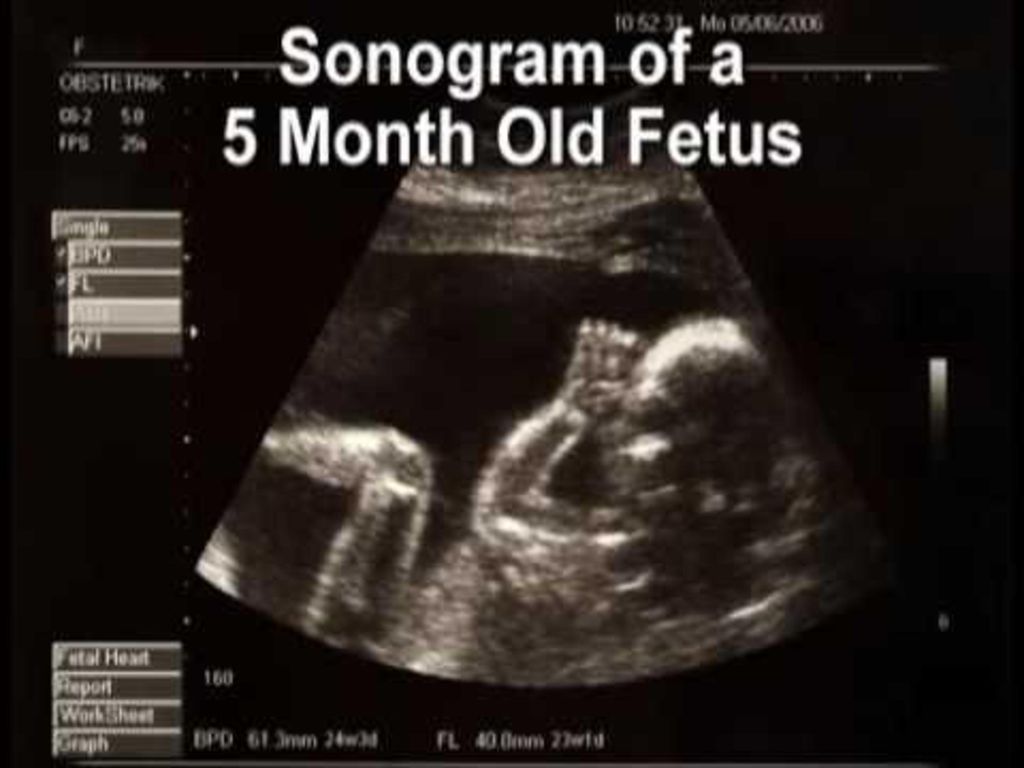
Read next
Your pregnancy at 11 weeks
Learn about your pregnancy journey and what is happening to you and your baby.
Speak to a maternal child health nurse
Call Pregnancy, Birth and Baby to speak to a maternal child health nurse on 1800 882 436 or video call. Available 7am to midnight (AET), 7 days a week.
Sources:
Raising Children Network (Pregnancy week-by-week), Better Health Channel (Pregnancy - week by week), Women's and Children's Health Network (The first 3 months of pregnancy: the first trimester)Learn more here about the development and quality assurance of healthdirect content.
Last reviewed: August 2020
Back To Top
Related pages
- Pregnancy week-by-week
Need further advice or guidance from our maternal child health nurses?
1800 882 436
Video call
- Contact us
- About us
- A-Z topics
- Symptom Checker
- Service Finder
- Linking to us
- Information partners
- Terms of use
- Privacy
Pregnancy, Birth and Baby is funded by the Australian Government and operated by Healthdirect Australia.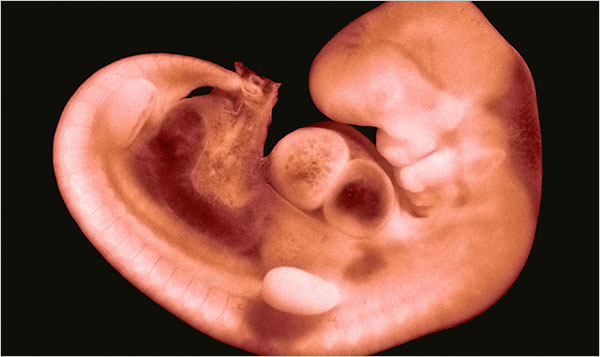
Pregnancy, Birth and Baby is provided on behalf of the Department of Health
Pregnancy, Birth and Baby’s information and advice are developed and managed within a rigorous clinical governance framework. This website is certified by the Health On The Net (HON) foundation, the standard for trustworthy health information.
This site is protected by reCAPTCHA and the Google Privacy Policy and Terms of Service apply.
This information is for your general information and use only and is not intended to be used as medical advice and should not be used to diagnose, treat, cure or prevent any medical condition, nor should it be used for therapeutic purposes.
The information is not a substitute for independent professional advice and should not be used as an alternative to professional health care. If you have a particular medical problem, please consult a healthcare professional.
Except as permitted under the Copyright Act 1968, this publication or any part of it may not be reproduced, altered, adapted, stored and/or distributed in any form or by any means without the prior written permission of Healthdirect Australia.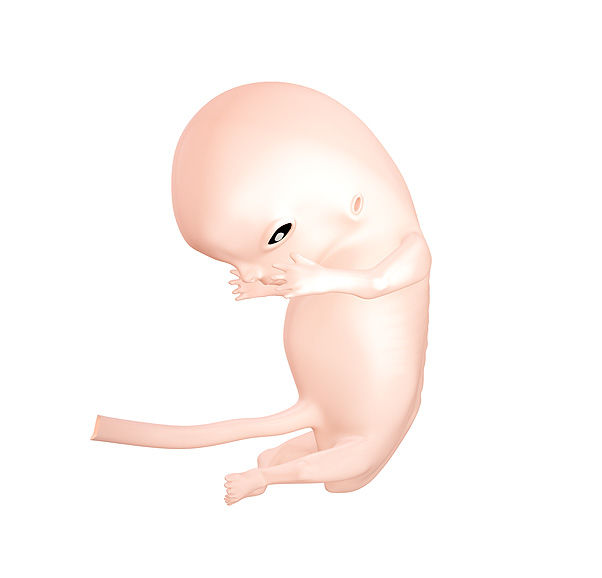
Support this browser is being discontinued for Pregnancy, Birth and Baby
Support for this browser is being discontinued for this site
- Internet Explorer 11 and lower
We currently support Microsoft Edge, Chrome, Firefox and Safari. For more information, please visit the links below:
- Chrome by Google
- Firefox by Mozilla
- Microsoft Edge
- Safari by Apple
You are welcome to continue browsing this site with this browser. Some features, tools or interaction may not work correctly.
10 weeks of pregnancy - what happens to the mother, the development of the fetus, sensations, what does the stomach look like
WHAT HAPPENS WITH THE BABY AT 10 WEEKS?
At the 10th week of pregnancy, the process of forming the baby's organs (organogenesis) is completed in the fetus, and now they will actively progress almost until the very birth.
At week 10, the fetus looks like a "small plum" in size: Now the length of the fetus from crown to tailbone is from 3.1 to 4.2 cm, and its weight is on average 5 g. There is approximately 20 ml of amniotic fluid in the amniotic sac. The child already knows how to swallow and spit it out, which contributes to the development of his chewing muscles and digestive system. The brain, liver, kidneys and intestines have taken shape and are starting to work, but so far they are imperfect and will continue to develop for the rest of the time.
By the 9th - 10th week of pregnancy, marigolds appeared on the fingers and toes of your little one, and thin transparent skin is covered with fluff. The upper lip and auricles are already formed, the high forehead stands out against the background of the face. An important event of this period is brain impulses, which can now be recorded by a special device. Also, your child has an individual blood type and Rh factor. The external genitalia are not yet clearly expressed, but the male hormone testosterone has begun to be produced in the testicles of the boys.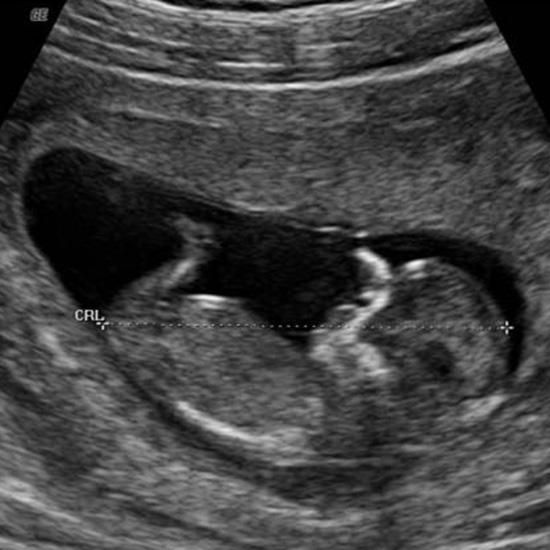
At the 10th week of pregnancy, the differentiation of the brain and spinal cord continues, the peripheral and central parts of the nervous system are isolated, so the movements of the baby become more ordered. He knows how to suck his thumb, make faces, bend and unbend his fists, cover his face with his hands and push off from the walls of the uterus. But until you feel it move.
WHAT'S HAPPENING TO MOTHER?
At the 10th week of pregnancy, you may be concerned about:
- toxicosis;
- tachycardia;
- sleep disturbance;
- discomfort in the groin area;
- frequent urination;
- soreness and tenderness of the breast;
- weight change;
- skin pigmentation;
- mood swings.
And now about everything in more detail!
TOXICOSIS
At this time, many women still experience its manifestations, but some lucky women note that vomiting and nausea are a thing of the past.
TACHYCARDIA
Tachycardia - an increase in the frequency of heart contractions (more than 90 beats per minute). Heart palpitations at 9 to 10 weeks of gestation can be caused by increased workload on the mother's heart, a fast metabolism, drinking caffeinated drinks, smoking, and taking certain medications. If this condition is not associated with pain, you can not worry. Otherwise, you should immediately consult a doctor.
SLEEP DISORDERS AT THE 10TH WEEKS OF PREGNANCY
Sleep disturbances in the 10th week of pregnancy are common. During the day, the expectant mother is overcome by drowsiness, and at night she is tormented by insomnia. Hormonal changes are to blame for everything. Inadequate or disturbed sleep can lead to weakness, fatigue, irritability, and headaches. The best way out of this situation is emotional release and additional rest during the day. And in the evenings, try to get rid of the disturbing thoughts that keep you awake. If your head hurts too often, consult a doctor in a women's clinic.
GRIN DISCOMFORT
Episodic pulling pains on the sides of the abdomen are often the result of tension in the ligaments of the enlarging uterus. If the pain is concentrated in the upper abdomen, it may be due to stomach problems or bowel problems. To eliminate unpleasant symptoms, review your diet; It will not be superfluous to consult a gastroenterologist.
INCREASED URINATION
If frequent trips to the toilet are not accompanied by discomfort in the genital tract, there is no talk of pathology. If there are symptoms such as pain, pain, burning, there may be an infection.
SORE AND SENSITIVE BREAST
Soreness and sensitivity of the breast is also characteristic of the 9th - 10th week of pregnancy. The body is already preparing for lactation, so such sensations should not scare you.
WEIGHT CHANGE
There may be different options here:
- If you get better little by little, then the fetus develops correctly;
- You are losing weight - this is the result of pronounced early toxicosis;
- You have a pathological increase - there is a possibility of obesity with all the ensuing problems, so the weight must be controlled.

SKIN PIGMENTATION
Perhaps you will develop age spots on your face, or you will find a dark line on your stomach. Such changes are associated with increased production of melanin, and over time, all this will disappear on its own.
MOOD CHANGES
Emotional instability due to hormonal changes in the body is normal during this period.
RISK FACTORS
At 10 weeks pregnant, there is a high risk of developing genital infections. Most often, expectant mothers are found to have candidiasis (thrush), but infection with chlamydia, gonococci, Trichomonas and other pathogenic microorganisms is not excluded. Regardless of the nature of the disease, it must be treated, otherwise intrauterine infection of the fetus may occur, and this is fraught with a violation of its development or even death. Watch for vaginal discharge. Normally, they should be transparent or light milky, of a homogeneous consistency, only a slight sour smell is possible, or it is completely absent. If the discharge becomes green-gray or yellow, if bubbles, flakes appear in them, if they resemble curdled mass and acquire a sharp unpleasant odor - immediately go to the doctor.
If the discharge becomes green-gray or yellow, if bubbles, flakes appear in them, if they resemble curdled mass and acquire a sharp unpleasant odor - immediately go to the doctor.
You should also be alerted by brown or bloody discharge at 10 weeks of gestation. A small amount of blood may appear after an examination by a gynecologist or after sexual intercourse. Most often this is due to erosion of the cervix, the loose tissues of which are damaged by external intervention. But when cramping pains in the abdomen join the discharge, this may be a sign of spontaneous abortion. Therefore, if you find yourself with such symptoms, immediately seek qualified help: a timely response is a chance to save the child.
MEDICAL SUPERVISION
Usually at the 10th week of pregnancy, a routine ultrasound examination is not done. At this time, the doctor will only determine the date of the new ultrasound session and refer you to blood and urine tests.
Also, starting from the 10th week, it is very important to control the level of sugar in the blood. This is especially true for expectant mothers who are overweight and those who have a hereditary predisposition to diabetes. An increase in blood sugar may be due to emotional distress or overeating. The norm varies from 4 - 5.2 mmol / l (on an empty stomach) to 6.7 mmol / l (a couple of hours after eating). In case of overestimated rates, it is necessary to consult an endocrinologist.
This is especially true for expectant mothers who are overweight and those who have a hereditary predisposition to diabetes. An increase in blood sugar may be due to emotional distress or overeating. The norm varies from 4 - 5.2 mmol / l (on an empty stomach) to 6.7 mmol / l (a couple of hours after eating). In case of overestimated rates, it is necessary to consult an endocrinologist.
RECOMMENDATIONS
At the 10th week of pregnancy, your baby's baby teeth are laid. This means that the diet should focus on foods containing calcium (legumes, almonds, sesame and poppy seeds, wholemeal bread, leaf and watercress, rose hips, broccoli, asparagus, carrots, radishes, sardines, salmon, milk and dairy). Enrich your diet with them, because your teeth can also suffer from a lack of calcium. And the body also needs iodine - now it begins to accumulate in the baby's thyroid gland.
Continue to monitor your health as the 10th week of pregnancy begins.
- Take care of proper nutrition.
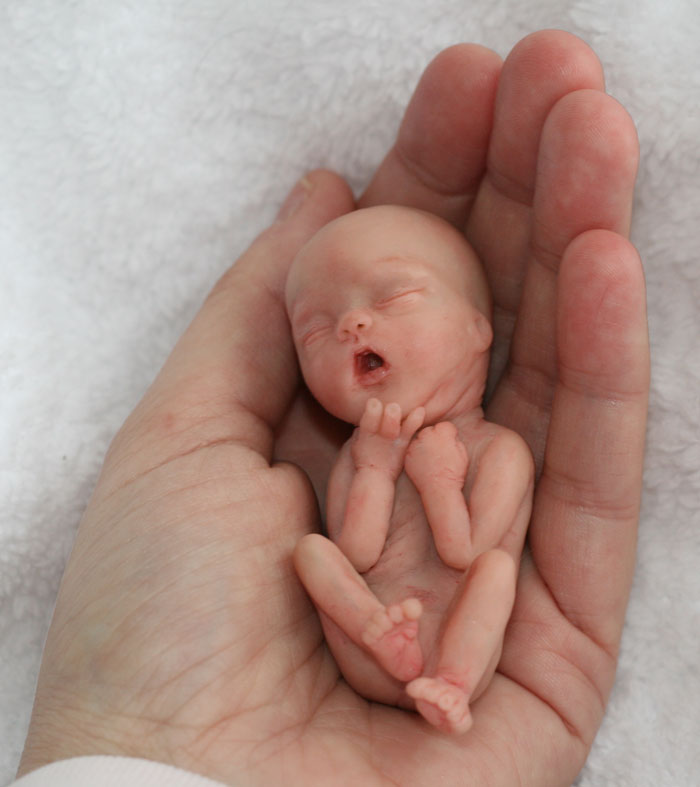 Reduce the amount of fatty and fried foods, smoked meats in your diet. It is better if you stew, bake or steam dishes. Limit salt and sugar intake;
Reduce the amount of fatty and fried foods, smoked meats in your diet. It is better if you stew, bake or steam dishes. Limit salt and sugar intake; - Be physically active. Overloads should not be allowed, but as long as the tummy does not interfere, you can go swimming, yoga, gymnastics for pregnant women, take daily walks in the fresh air. This will improve metabolism and enrich the blood with oxygen;
- Drink enough fluids at 10 weeks of pregnancy to prevent dehydration. Drink water, freshly squeezed juices, do not neglect first courses, eat more seasonal berries and fruits that contain a lot of vitamins and water (watermelons, melons, pears, oranges, grapes, etc.). Extra fluid will help maintain skin elasticity, increase blood flow, maintain normal amniotic fluid volume, reduce the risk of genital infections and relieve constipation;
- Learn to relax, recharge with positive emotions: meet friends, remember your hobby or discover some new interesting hobby.
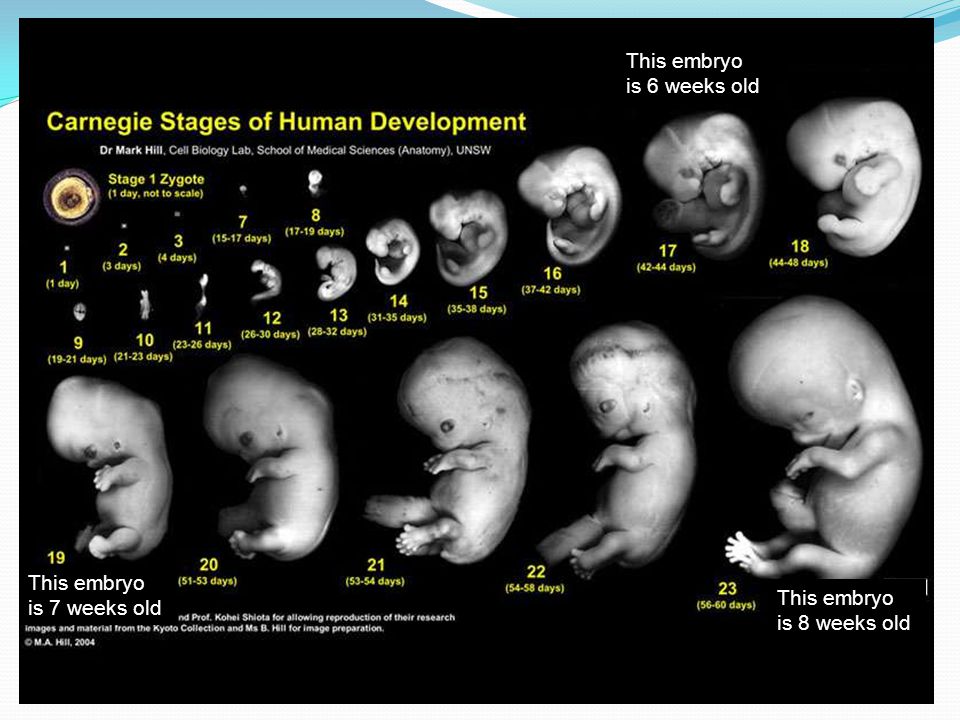
The third month of pregnancy: changes in the female body and fetal development by week
Child nutritionVitamins and minerals during pregnancy and breastfeeding
Putting order in our knowledge about what vitamins and minerals and in what quantity are necessary for the health of the child, and what foods contain them.
Pregnancy and childbirthHow to improve digestion during pregnancy
How to improve digestion, how to adjust the diet and diet and lifestyle.
Pregnancy and childbirthDigestion during pregnancy
Pregnancy and childbirthEating right during pregnancy0111
How to create a healthy diet for a pregnant woman, what vitamins should be present in the diet, how much liquid should be drunk, what drinks to prefer and what to avoid, what foods are considered harmful for pregnant women and how to keep weight under control while staying in a good mood.
what happens to mother and baby
9 weeks 11 week
Two months are over
At the 10th week, the fetus continues to grow and develop safely. His brain is growing especially fast. Every minute, up to 250,000 neurons appear in it. These are nerve cells. Testosterone begins to be produced, which affects the development of the genital organs. The tail is missing from the fetus. The umbilical cord lengthens, which contributes to freer fetal movements. At this stage, he is in the uterus in a bent position and is already making reflex movements. For example, when touching the walls of the uterus, he turns his head in response, bends and unbends his arms and legs, and moves away in the opposite direction. He is still small, and the woman does not feel his movements. The fetal diaphragm is formed. This muscle formation separates the abdominal and thoracic cavities. The diaphragm now takes part in the respiration of the fetus. He has sucking movements with his lips.
He has sucking movements with his lips.
Strength of hormones
The pregnancy is going well. From this week, the placenta begins to produce hormones, including human chorionic gonadotropin, pregnancy hormone in sufficient quantities and somatomammotropin, which regulate metabolic processes in the body of a pregnant woman and prepare the mammary glands for feeding the unborn baby. The corpus luteum of a woman's ovaries, which produced the necessary hormones for the normal course of pregnancy, ceases to exist by this week. The functions of the corpus luteum are now performed by the placenta and, as they mature, by the hormonal organs of the fetus. At this time, the tests that were taken 2-3 weeks ago are already ready. The doctor reports their results.
Health care
With low hemoglobin, a woman is prescribed treatment. Low levels of hemoglobin indicate that hypoxia may occur in her and the fetus, that is, the organs and tissues do not have enough oxygen, which is necessary for the oxidation of energy-containing substances - for example, carbon molecules, fats and proteins. When they are oxidized and split, a large amount of energy is released, which is used by the cells of the body for its growth, development and vital activity. Therefore, such treatment is necessary in the future - carefully monitor hemoglobin levels. From a blood test, you can extract information about the presence of inflammatory processes in the body and conduct additional examinations to identify the cause of inflammation. These can be chronic diseases and hidden infections that can damage the fetus or be transmitted to it during childbirth. Therefore, the prescribed treatment is also necessary. If only the mother is treated, if necessary, after 12–14 weeks, drugs can be taken that do not pass through the placental barrier. In order to detect a sexual infection, swabs are taken from the vagina and urethra, as well as blood from a vein for the presence of infectious diseases (hepatitis, AIDS).
When they are oxidized and split, a large amount of energy is released, which is used by the cells of the body for its growth, development and vital activity. Therefore, such treatment is necessary in the future - carefully monitor hemoglobin levels. From a blood test, you can extract information about the presence of inflammatory processes in the body and conduct additional examinations to identify the cause of inflammation. These can be chronic diseases and hidden infections that can damage the fetus or be transmitted to it during childbirth. Therefore, the prescribed treatment is also necessary. If only the mother is treated, if necessary, after 12–14 weeks, drugs can be taken that do not pass through the placental barrier. In order to detect a sexual infection, swabs are taken from the vagina and urethra, as well as blood from a vein for the presence of infectious diseases (hepatitis, AIDS).
Immune conflict
When determining the blood type and Rh factor, the possibility of an immune conflict between the mother and the fetus is revealed. Rhesus conflict between mother and fetus is a more serious condition than blood type incompatibility. In an Rh-negative woman carrying an Rh-positive child, antibodies to the child's Rh factor are formed in the immune system of the blood in different quantities. The severity of the condition that has arisen, which can be fatal to the fetus, depends on their number and the state of health of the woman. Additionally, after examining the woman and identifying the appearance of antibodies in the blood, treatment is prescribed. In severe cases, in-patient treatment and delivery in specialized maternity facilities are necessary to continue the pregnancy.
Rhesus conflict between mother and fetus is a more serious condition than blood type incompatibility. In an Rh-negative woman carrying an Rh-positive child, antibodies to the child's Rh factor are formed in the immune system of the blood in different quantities. The severity of the condition that has arisen, which can be fatal to the fetus, depends on their number and the state of health of the woman. Additionally, after examining the woman and identifying the appearance of antibodies in the blood, treatment is prescribed. In severe cases, in-patient treatment and delivery in specialized maternity facilities are necessary to continue the pregnancy.
Pro tests
In women who are pregnant again, pregnancy may be more difficult. Based on the results of a urinalysis, we can conclude about the work of the kidneys, a very important organ that has a heavy load during pregnancy: the presence of an infection in the urinary tract or the identification of a condition in which the kidneys skip a protein, such as glomerulonephritis.

